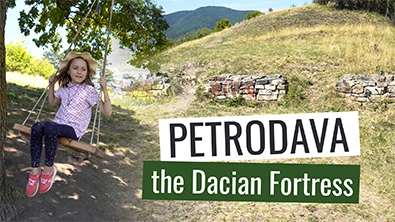Romania : Petrodava the Dacian Fortress | Piatra Neamt
Petrodava the Dacian Fortress is located 4 km from the center of Piatra-Neamţ. It is one of the most interesting and commented ancient fortifications in Moldova.
Even though it is considered one of the oldest historical monuments in Piatra Neamț, currently it is not found in the local tourist guides and does not benefit from minimum protection.
The location on Google Maps directs tourists to the old access road. A very steep path, on rough terrain, through the interior of a forest. At the top you can still see some traces of the signs of this path, a sign that it was accessible a few years ago.
The most accessible access road is to the south, on a gravel road. We preferred to leave the car by the river and walk to enjoy the beauty of nature.
According to archaeologists, Dacian vestiges were discovered around this fortress on an area of almost 20,000 square meters on two living levels: one dating from the 2nd century BC, the other corresponding to the period between the 1st centuries BC. and I AD
“The existence of these fortifications (three in a limited area: Bâtca-Doamnei and Cozla, belonging to the city of Piatra-Neamţ and Piatra Şoimului), raises the hypothesis of a powerful political and economic center, correcting the opinion that Petrodava mentioned by Ptolemy among the great Dacian cities”, says professor Daniel Deaconu, doctor in history.
The construction is sufficiently similar to the Dacian fortresses known on the territory of Transylvania – evidence of Geto-Dacian civilizational continuity on both slopes of the Carpathian mountains.
The current state of this old Dacian fortress is proof that history is not only written by the victors. History can also be rewritten by omission through indifference.






















